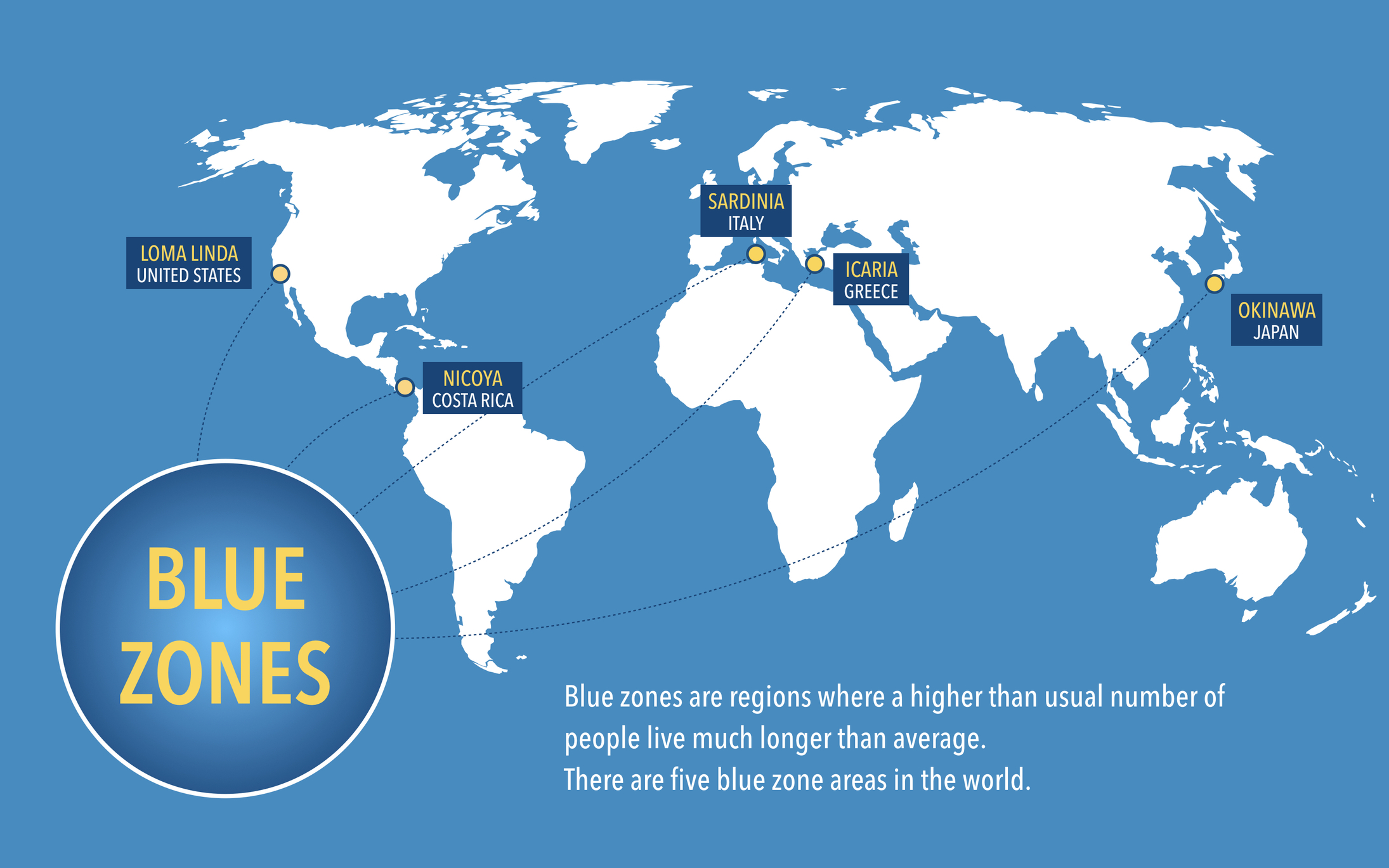Why I want to live in one!
I first learned about “Blue Zones” about seven years ago and was intrigued as to why these five regions of the world had populations of people who were living longer, healthier lives due to many factors like lifestyle – including eating a plant-based diet and daily exercise. These regions also had better water and air quality, amongst many other factors.
I have talked about my intention to buy a property in Costa Rica and become a snowbird during winter to avoid the cold Wisconsin winters. When we were down there recently, we fell in love with the country, the food, the lifestyle, and the people. That it is a “Blue Zone” is a huge bonus for us and weighs positively on our decision. We work hard to live and maintain a healthy lifestyle to fit right into this culture.
So, in essence, a “Blue Zone” is a non-scientific term given to geographic regions that are home to some of the world’s oldest people. And not only are they old, but they are thriving! They are living to 100+ years old. WOW! The term “Blue Zone” was first used by the author Dan Buettner, who studied areas of the world where people live exceptionally long lives. Once identified, Buettner and his colleagues drew blue circles around them on a map….hence the term “Blue Zones”.
So, where are these 5 “Blue Zones” located worldwide?
- Icaria (Greece):
- Ogliastra, Sardinia (Italy):
- Okinawa (Japan):
- Nicoya Peninsula (Costa Rica):
- Loma Linda, CA (USA)
People Who Live in Blue Zones Eat a Diet Full of Whole Plant Foods
One thing common to Blue Zones is that those who live there primarily eat a 95% plant-based diet and tend to eat meat only around five times per month. They eat primarily vegetables, legumes, whole grains, and nuts. Specifically in Icaria and Sardinia, fish is often eaten.
The Fast and Follow Calorie Restrictions and the 80% Rule.
Other habits common to the Blue Zones are reduced calorie intake and fasting. Furthermore, Okinawans tend to follow the 80% rule, which they call “hara hachi bu.” This means that they stop eating when they feel 80% full rather than 100% full…and they practice eating slowly, which satisfies their hunger faster. In addition to consistently reducing overall calorie intake, periodic fasting appears to be a common practice.
They Consume Alcohol in Moderation
Another dietary factor common to many of the Blue Zones is moderate alcohol consumption. The beneficial effect of moderate alcohol consumption may depend on the type of alcohol. Red wine may be the best type of alcohol, given that it contains a number of antioxidants from grapes.
Exercise Is Built Into Daily Life
In the Blue Zones, people don’t exercise purposefully by going to the gym. Instead, gardening, walking, cooking, and other daily chores are built into their daily lives. In other words, they move more.
They Get Enough Sleep
People in Blue Zones get sufficient sleep. In the Blue Zones, people tend not to go to sleep, wake up or go to work at set hours. They just sleep as much as their body tells them to.
Other Traits and Habits Associated With Longevity
Aside from diet, exercise, and rest, a number of other social and lifestyle factors are common to the Blue Zones. They include:
Being religious or spiritual: Blue Zones are typically religious communities.
Having a life purpose: People in Blue Zones tend to have a purpose known as “ikigai” in Okinawa or “plan de vida” in Nicoya. It’s a “Life Plan” for health and longevity!
Older and younger people living together: In many Blue Zones, grandparents often live with their families.
A healthy social network: Your social network, called “moai” in Okinawa, can affect your health. For example, if your friends are obese, you are more likely to be obese, possibly through social acceptance of weight gain. So living amongst others practicing healthy lifestyles contributes to that longevity and vitality.
The Bottom Line
The Blue Zone regions are home to some of the oldest and healthiest people in the world. Although their lifestyles differ slightly, they mostly eat a plant-based diet, exercise regularly, drink moderate amounts of alcohol, get enough sleep, and have good spiritual, family, and social networks. Each of these lifestyle factors has been shown to be associated with a longer life. By incorporating them into your lifestyle, it may be possible for you to add a few years to your life.
I’m in for that! If I’m off to a new life adventure in moving to Costa Rica for the winter months, I want to live there in health and vitality for many years to come…yes – way past 100!
Contact Kat, your personal diamond and jewelry expert, for jewelry designs and services you’ll be wild about.
Click HERE for my monthly newsletter: Carats & Karats Diamonds, Jewelry, and Lifestyle News From Kat.


